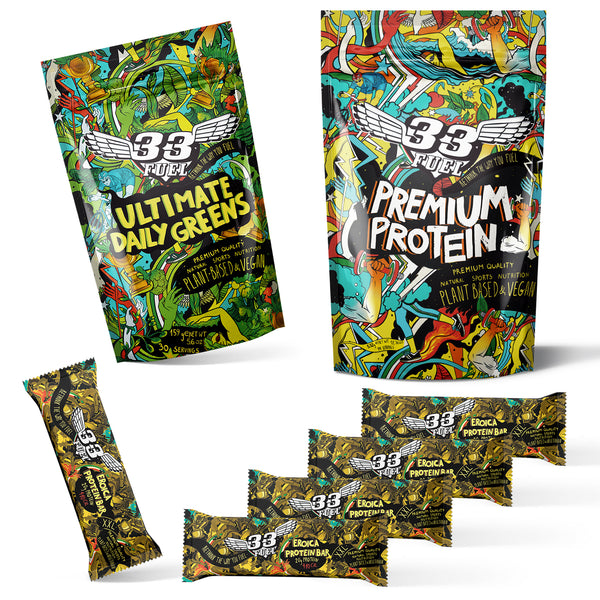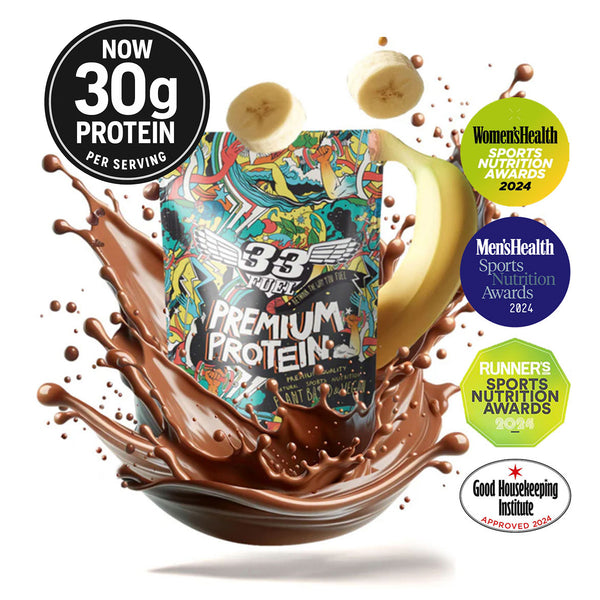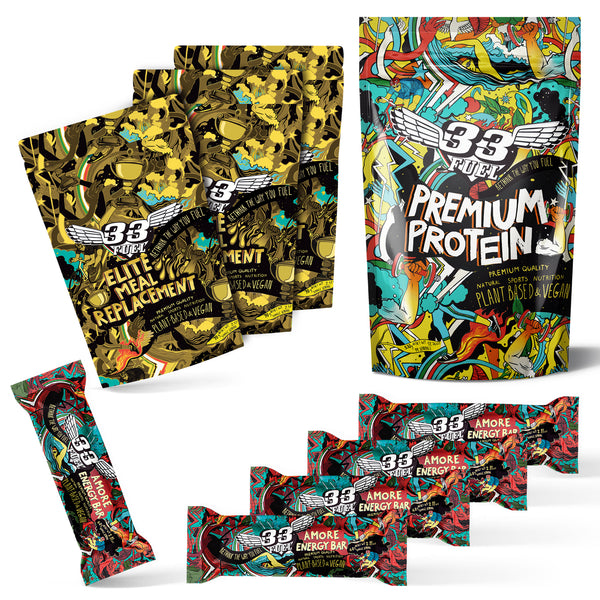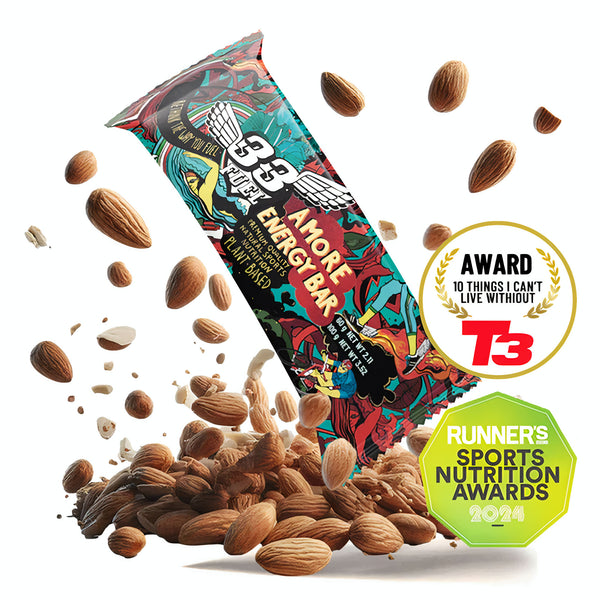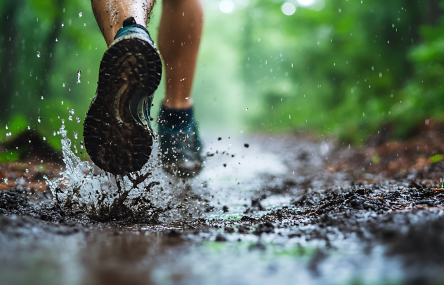How To Lose Belly Fat – Naturally, Sustainably, and For Good

If belly fat were just about looks, we could probably leave it to the filters. But it's not. Belly fat can zap your energy, slow your recovery, and raise the risk of everything from poor sleep to chronic illness. So if you’re tired of carrying that extra tyre, here’s how to lose belly fat the smart way – no gimmicks, no gut bombs, just real strategies rooted in Performance, Health, and a Fitter Future. Let's get to it
Why do we gain belly fat?
The fat in your abdomen surrounding your organs – called visceral fat – increases as we age for a number of reasons.
While that’s the topic of another blog, in short this happens because:
- Hormone levels – testosterone in men and oestrogen in women - decrease
- Metabolism slows significantly after 40
- We generally become less active
- Our diet becomes poorer
There’s little we can do about the first two of these, but the second two are wholly in our control. But if hormone levels and metabolism both drop with age, why don’t we just go with the flow and embrace the middle aged spread?
Shop our award-winning sports nutrition
Why Belly Fat Really Matters (It’s Not Just Vanity)
There are two main types of belly fat:
- Subcutaneous fat – the stuff you can pinch
- Visceral fat – the more dangerous stuff that wraps around internal organs
Visceral fat is a sneaky villain. It messes with hormones, disrupts sleep, increases inflammation and raises your risk of heart disease, diabetes and even depression. For anyone who trains regularly or lives an active lifestyle, it can also hinder recovery, reduce oxygen efficiency, and impact testosterone levels.
So yes, shedding it makes your abs more visible, but more importantly: you’ll move better, recover faster, and live longer.
Waist size and health
Weight is important, but waist size also matters. Having a large waist doubles the risk of death from any cause compared to those with smaller waists, according to a study of 48,500 individuals published in the Archives of Internal Medicine.
A large waist was also linked with higher risk of death regardless whether the person was normal weight, overweight or obese.

Above all else, you FEEL great when you’re fit and healthy
The Big Fat Myth: Spot Reduction Doesn’t Work
Let’s get this out the way now: you cannot target belly fat with crunches, planks or those vibrating belt things you saw on Instagram. Your body decides where to lose fat from, and sadly, it doesn’t take requests.
Fat loss is a whole-body process. When done right, belly fat will come off along with the rest. But that means focusing on what actually works.
So let's dive into those strategies...
How to lose belly fat #1: Create a (Sustainable) Calorie Deficit
To lose fat, you must burn more calories than you consume. Sounds simple, right? But most people get this wrong by slashing calories too hard or skipping meals entirely.
That kind of approach might work short term, but it trashes your metabolism, kills your energy, and often leads to bingeing later. The trick? A small, consistent deficit.
Start with these tips:
- Eat mindfully and stop when you're 80% full
- Prioritise whole, natural foods
- Cut the UPFs (ultra-processed foods) – they’re calorie-dense, nutrient-poor, and wreck your metabolism
- Move more each day (you don’t have to track it, but it helps)
This is where Ultimate Daily Greens can be a gamechanger. It helps you flood your body with essential micronutrients while staying low on calories. High reward, low effort.
 How to lose belly fat #2: Focus on Protein and Fibre (the Dream Team)
How to lose belly fat #2: Focus on Protein and Fibre (the Dream Team)
Protein and fibre are your belly fat-busting best mates.
Why?
- Protein keeps you fuller for longer, preserves lean muscle, and boosts metabolism
- Fibre supports digestion, feeds good gut bacteria, and helps regulate appetite
Aim to include a quality protein source and at least one fibre-rich food in every meal. Think lentils, beans, leafy greens, oats, chia, and flaxseeds.
Need a quick protein fix without the bloat? Our Premium Protein is a gut-friendly, plant-based powerhouse that mixes smooth, tastes lush and fuels you without any of the junk.
How to lose belly fat #3: Train Smart (Not Just Hard)
You don’t have to become a gym bro or spend your life doing cardio. In fact, the best exercise plan is the one you can actually stick to.
That said, the science is clear: a mix of strength training and short, sharp cardio (like HIIT) is brilliant for belly fat.
Here’s the blueprint:
- Strength train 2-3 times a week (focus on compound movements: squats, deadlifts, pushups)
- Add 1-2 sessions of high-intensity interval training (think sprints, circuits, bike intervals)
- Stay active daily: walk, ride, dance, stretch, lift your kids, chase your dog – it all counts
And don’t skip rest. Recovery is where your body actually changes.

Once each week, move so fast you become a blur to anyone watching!
How to lose belly fat #4: Rethink Your Fuel (No More Frankenfoods)
Here’s a nasty secret about most sports nutrition: it’s ultra-processed. Sugar bombs dressed up as health food. They spike your blood sugar, smash your gut, and leave you craving more.
At 33Fuel, we don’t play that game. We don’t do maltodextrin, artificial sweeteners, or weird lab extras you can’t pronounce. We only work with real food – the stuff your body recognises, digests and thrives on.
Swapping your usual bar or gel for something like the Amore Energy Bar or Chia Energy Gel can mean the difference between stable energy and a sugar crash.
Real fuel = real results.
How to lose belly fat #5: Sleep Like a Legend
This one’s criminally underrated. Lack of sleep throws your hunger hormones out of whack, increases cravings (especially for high-calorie junk), and raises cortisol – a stress hormone directly linked to belly fat.

Sleep more - it'll help you shift fat
Aim for:
- Seven to eight hours a night
- Devices off an hour before bed
- A cool, dark room
- Wind-down routine (stretch, journal, magnesium, whatever works for you)
Sleep isn’t lazy. It’s essential performance fuel.
How to lose belly fat #6: Manage Stress Like a Pro
Cortisol strikes again. Chronic stress encourages fat storage – particularly around the belly.
This isn’t about becoming a monk. But building in mini resets during your day helps massively.
Try this:
- Five deep breaths before each meal
- Ten-minute walk at lunchtime
- Evening screen break
- Laugh more, even at your own terrible jokes
Stress less, lose more.
Stress less – it’ll shed fat and increase longevity
How to lose belly fat #7: Ditch the Perfection Trap
Belly fat doesn’t disappear overnight, and that’s fine. This is about consistency, not perfection. One slice of cake doesn’t ruin progress. One missed workout doesn’t blow the whole plan.
The only rule? Don’t quit.
Celebrate small wins. Track how your clothes fit, how you feel, how you move. Weight is just one metric.
So... How Long Will It Take?
Honest answer? It depends. On your starting point, age, lifestyle, and genetics. But most people start noticing changes in 3-4 weeks when they get consistent with the basics.
You don’t need to do everything at once. Just pick one step and start. Then stack the others on.

Happiness comes from within, and by being on a journey you're enjoying. Think process, not outcome
TL;DR? Here’s Your 33Fuel-Approved Belly Fat Gameplan:
- Eat whole, real foods and create a small calorie deficit
- Cut out ultra-processed junk (especially sports nutrition masquerading as healthy)
- Prioritise protein and fibre
- Train smart: strength + HIIT + daily movement
- Sleep and stress matter more than you think
- Be consistent, not perfect
Above all else, remember: this isn’t about punishing your body. It’s about fuelling it to thrive – today, tomorrow and for the long haul.
That’s how you lose belly fat. And that’s how you build a fitter future.
More performance boosting content
From the Vlog – Lose weight eating your favourite foods
From the Blog
5 strength training myths busted
Blue Zones – 7 lessons from the healthiest people on earth
Best strength exercises for runners
Cortisol impact on health and performance
Is your sports nutrition ultra-processed foods?
Probiotics and prebiotics for health and performance





